Related Research Articles

Martin Ludwig Bormann was a German Nazi Party official and head of the Nazi Party Chancellery, private secretary to Adolf Hitler, and a war criminal. After the war, he was convicted and sentenced to death-in-absentia for crimes against humanity. Bormann gained immense power by using his position as Hitler's private secretary to control the flow of information and access to Hitler. He used his position to create an extensive bureaucracy and involve himself as much as possible in the decision making.

The Beer Hall Putsch, also known as the Munich Putsch, was a failed coup d'état by Nazi Party leader Adolf Hitler, Generalquartiermeister Erich Ludendorff and other Kampfbund leaders in Munich, Bavaria, on 8–9 November 1923, during the Weimar Republic. Approximately two thousand Nazis marched on the Feldherrnhalle, in the city centre, but were confronted by a police cordon, which resulted in the deaths of 15 Nazis, four police officers, and one bystander.

Winifred Marjorie Wagner was the English-born wife of Siegfried Wagner, the son of Richard Wagner, and ran the Bayreuth Festival after her husband's death in 1930 until the end of World War II in 1945. She was a friend and supporter of Adolf Hitler, himself a Wagner enthusiast, and she and Hitler maintained a regular correspondence.

Karl Ernst Haushofer was a German general, professor, geographer, and diplomat. Haushofer's concept of Geopolitik influenced the ideological development of Adolf Hitler. Rudolf Hess was also a student of Haushofer, and during Hess and Hitler's incarceration by the Weimar Republic after the Beer Hall Putsch, Haushofer visited Landsberg Prison to teach and mentor both Hess and Hitler. Haushofer also coined the political use of the term Lebensraum, which Hitler also used to justify both crimes against peace and genocide. At the same time, however, Gen. Haushofer's half-Jewish wife and their children were categorized as Mischlinge under the Nuremberg Laws. Their son, Albrecht Haushofer, was issued a German Blood Certificate through the influence of Rudolf Hess, but was arrested in 1944 over his involvement with the July 20th plot to assassinate Adolf Hitler and overthrow the Nazi Party. During the last days of the war, Albrecht Haushofer was summarily executed by the SS for his role in the German Resistance.
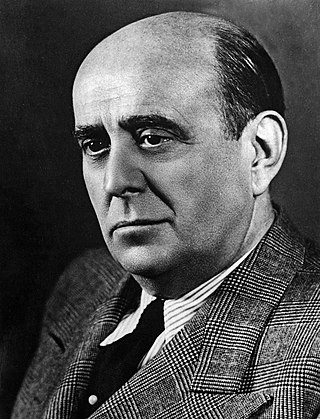
Jan Garrigue Masaryk was a Czech diplomat and politician who served as the Foreign Minister of Czechoslovakia from 1940 to 1948. American journalist John Gunther described Masaryk as "a brave, honest, turbulent, and impulsive man".

Rudolf Franz Ferdinand Höss was a German SS officer and the commandant of the Auschwitz concentration camp. After the defeat of Nazi Germany and the end of World War II, he was convicted in Poland and executed for war crimes committed on the prisoners of the Auschwitz concentration camp and for his role in the Holocaust.

Johann Georg Elser was a German worker who planned and carried out an elaborate assassination attempt on Adolf Hitler and other high-ranking Nazi leaders on 8 November 1939 at the Bürgerbräukeller in Munich. Elser constructed and placed a bomb near the platform from which Hitler was to deliver a speech. It did not kill Hitler, who left earlier than expected, but it did kill 8 people and injured 62 others. Elser was held as a prisoner for more than five years until he was executed at Dachau concentration camp less than a month before the surrender of Nazi Germany.

Rudolf August Oetker was a German entrepreneur and former member of the Nazi Party, who became a billionaire running his private food company Oetker-Gruppe, founded by his grandfather August Oetker.

Albrecht Georg Haushofer was a German geographer, diplomat, author and member of the German Resistance to Nazism.

Eduard Roschmann was an Austrian Nazi SS-Obersturmführer and commandant of the Riga Ghetto during 1943. He was responsible for numerous murders and other atrocities. As a result of a fictionalized portrayal in the novel The Odessa File by Frederick Forsyth and its subsequent film adaptation, Roschmann came to be known as the "Butcher of Riga".
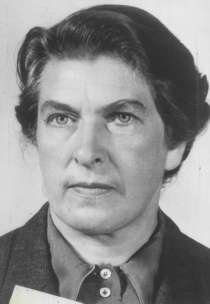
Johanna Wolf was Adolf Hitler's chief secretary. Wolf joined Hitler's personal secretariat in the autumn of 1929 as a typist, at which time she also became a member of the Nazi Party. Wolf served as Hitler's chief secretary until the night of 21–22 April 1945, when she was ordered to fly out of Berlin to safety. She died on 5 June 1985.
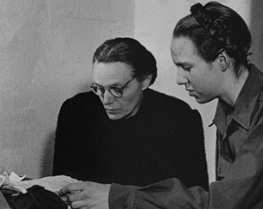
Gudrun Margarete Elfriede Emma Anna Burwitz was the daughter of Heinrich Himmler and Margarete Himmler. Her father, as Reichsführer-SS, was a leading member of the Nazi Party, and chief architect of the Final Solution. After the Allied victory, she was arrested and made to testify at the Nuremberg trials. Never renouncing Nazi ideology, she consistently fought to defend her father's reputation and became closely involved in Neo-Nazi groups that give support to ex-members of the SS. She married Wulf Dieter Burwitz, an official of the extremist NPD.
Hess or Heß, a German and Ashkenazic surname, meaning somebody originally from the region of Hesse. Two alternative origins have been reported. Usage in the south of Germany may arise from a contraction of the personal name Matthäus.
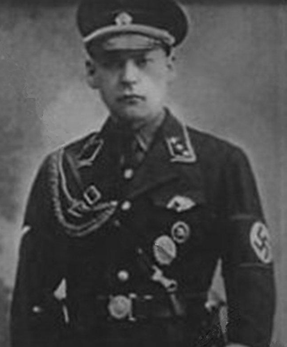
Hermann Gauch was a Nazi race theorist noted for his dedication to Nordic theory to an extent that embarrassed the Nazi leadership when he claimed that Italians were "half ape". Briefly adjutant to Heinrich Himmler, his career was later stalled by Himmler himself. During World War II he served with distinction in the Yugoslav campaign.

Prince Ernst Heinrich of Saxony, Duke of Saxony was a member of the Saxon Royal Family. Ernst Heinrich was the youngest son of the last King of Saxony, Frederick Augustus III, and his wife Archduchess Luise of Austria, Princess of Tuscany. From 1923 through 1945, Ernst Heinrich was Administrative Chief of the association "Haus Wettin – Albertinische Linie e.V.".

Edda Carin Wilhelmine Göring was the only child of German politician, military leader, and leading member of the Nazi Party Hermann Göring, by his second marriage to the German actress Emmy Sonnemann.

The family of Sigmund Freud, the pioneer of psychoanalysis, lived in Austria and Germany until the 1930s before emigrating to England, Canada, and the United States. Several of Freud's descendants and relatives have become well known in different fields.

Rudolf Walter Richard Hess was a German politician and a leading member of the Nazi Party in Nazi Germany. Appointed Deputy Führer to Adolf Hitler in 1933, Hess held that position until 1941, when he flew solo to Scotland in an attempt to negotiate the United Kingdom's exit from the Second World War. He was taken prisoner and eventually convicted of crimes against peace. He was still serving his life sentence at the time of his suicide in 1987.
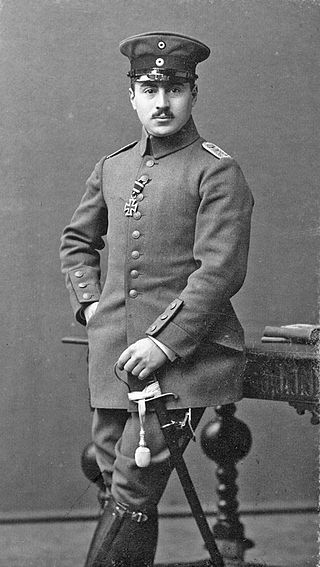
Ernst Moritz Hess was a baptized German Jew who served in the Imperial German Army during the First World War. He commanded the company of the Bavarian Reserve Infantry Regiment 16 in which Adolf Hitler served during the war. During the inter-war period he served as a judge before being forced out of office after the passing of the Nuremberg Laws by the Nazis in 1935, as he was classified as a "full-blooded Jew" due to his mother being Jewish, even though he was baptised a Protestant.
Ilse Hess was the wife of Rudolf Hess. After World War II she became a well-known author.
References
- 1 2 Tania Crasnianski, Children of Nazis: The Sons and Daughters of Himmler, Göring, Hess, Mengele, and Others — Living with a Father's Monstrous Legacy (Simon and Schuster, 2018), pp. 70–78
- ↑ British Sympathy for Jailed Nazi on the BBC